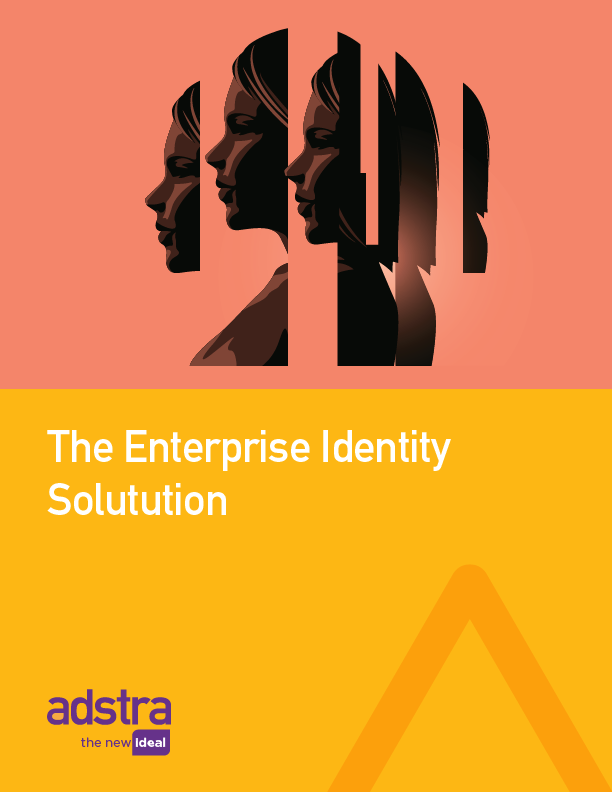Financial Case
for Identity
By Charlie Swift
EVP, Head of Marketing
& Account Management

CMOs today are well aware that they need identity solutions to bring their marketing efforts to life. As marketing and advertising expand across new and emerging channels, brands are looking to unite their consumer touchpoints both in understanding and experience. This includes a desire to deliver clear and consistent messaging, recognize customers efficiently within the media they engage, and preserve decades worth of marketing data, ensuring that it’s used to inform the next round of campaigns, creative, and media buying. Without an effective approach to customer identity over time, a marketer’s success across these goals will be limited.
These marketing use cases are rock solid, and that’s why CMOs are ready to invest heavily in identity solutions that will carry them into the future. That said, spending on a piece of technology with no immediate return on investment is likely to turn some heads in the boardroom. It’s hard to justify a massive outlay for something that will help with future marketing efforts.
But identity isn’t merely the CMO’s problem. There are financial justifications for investing heavily in identity right now as well – and those may be the deciding factors that can help brands act at this critical juncture.
Here’s what this might look like. A brand analytics team, responsible for audience building, is looking for an identity solution to connect its website (which serves as a content hub) with all of its other properties, email lists, and media channels. Layer into that the need to connect both first- and third-party data to inform go-forward messaging decisions. The CMO understands the complexity of the issue and understands that the brand needs a comprehensive solution to manage this going forward.
An identity solution for an enterprise of this size might cost around $1 million. However, once the CMO brings that price tag to the rest of the executive team, the message that gets returned is that sales now needs to sign up for an extra $2 million in revenue to pay for this technology that the analytics team needs. Anyone who’s not on the marketing side, or not technologically-oriented, is going to blanch at the idea, especially when there is a separation between revenue and expense accountability within an organization.
Most CFOs would look at this request and ask where the money is going to come from and want to see a timeline for when this investment would show value. The smart CMO can solve this challenge by pointing to the immediate and long-term value of managing identity, including some major cost savings. Here is what CFOs need to understand about identity.
1. Marketing Effeciency Goes up
The goal of uniting users and their associated data from across channels and media properties may feel relatively complex, but it’s also representative of modern marketing. There are more ways to reach consumers than ever before, and data is most valuable to the marketing team when it is standardized and usable across channels. Audience reach becomes more efficient, ensuring that media spending is not wasted on the wrong customer. Performance measurement becomes a greater possibility allowing marketers to adjust messaging faster and more effectively. Without unity of data there’s a lot of guessing and fuzzy math going on to determine future marketing plans.
Identity solutions can provide a single view across the addressable audience. This helps CMOs lay out their future media plans, with a greater understanding of which audiences and channels are under- or over-exposed. The more insight available, the more efficient the plan, the greater the cost savings and the higher the ROI. For CFOs, this means they can hold CMOs more accountable to revenue to cost KPIs and better optimize resources.
2. Revenue Leads to a Quick Payoff
The point of building an identity strategy and using it to form a media plan is to drive real-world outcomes. Targeted advertising, without the waste, should result in high-performing campaigns that drive more revenue. The payoff may not be immediate, but with measurable revenue growth, the CMO and CFO should be able to shake hands and agree on a job well done.
3. Compliance equals cost savings
While less directly attributable, paying for a solution and building out an identity strategy right now has serious benefits across the enterprise. There has never been more scrutiny on how consumer data is managed, and there are myriad risks for brands who don’t take it seriously. Compliance failures can result in massive fines, especially as new state privacy laws go on the books. Investing in identity and compliance right now ensures that brands can evolve alongside the privacy landscape while avoiding costly fines. Each CFO is solving for this financial risk today, and can easily size the impact of any risk reduction.
4. The safer the better
While identity solutions can help ensure compliance, they can also ensure safety. Consumer data and privacy are hot button issues in part because major companies keep experiencing links, exposing the data of millions of customers. Beyond the basic financial blows, this can damage a brand’s reputation beyond preparation. A secure identity solution reduces the risk of data leakage, thereby avoiding damaging experiences in the future. There’s a longer-term benefit as well, which is that paying for an adaptable identity now should save a brand from having to fully modernize their technology later. Updates over time are always easier than platform replacements. That should also provide meaning cost savings to the CFO.



